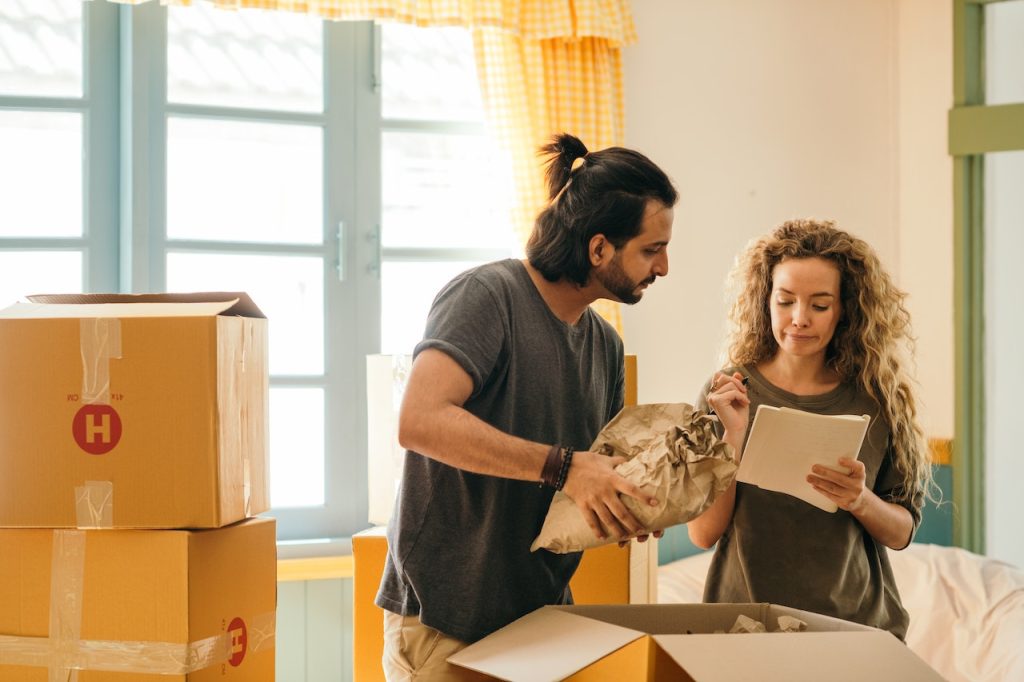Moving home with your entire family can be challenging and stressful, especially when fragile items must be packed and transported carefully.
Whether you’re moving across the street or abroad, packing fragile items can be a daunting task. However, with the right approach and knowledge, none of your belongings will suffer damage during packing, moving or unpacking.
So, to make the entire process of moving a bit more stress-free, we decided to provide you with eight full-proof tips that will help you move precious items to your new home without much risk.
Choose strong and sturdy moving boxes
To pack fragile items, choose strong and sturdy moving boxes. Reusing old boxes or opting for cheaper options might sound tempting, but investing in good-quality boxes is simply essential.
This should go without saying, but look for containers made of thick cardboard or plastic that can withstand the weight of your items. The plastic solution is far better for fragile items, as it will protect them from breaking and keep dust and moisture away while on the road and in storage.
Also, ensure to choose boxes of the correct size. When a box is too large, that can lead to items shifting around during transportation, while a box that is too small can result in items being cramped together.
Secure and label the moving boxes
Securing and labelling the moving boxes is essential in packing fragile items. Ensure the boxes are taped securely, leaving no open edges or flaps.
Also, label each box with its contents, destination, and handling instructions, such as “fragile” or “this way up.” This will help the movers to identify the boxes that require extra care during transit and ensure that they are placed in the correct location in the moving truck.
Proper labelling will also help you keep track of your belongings and ensure nothing is left behind.
Moreover, it will help you find what you need, even if some of your stuff ends up in a storage unit for some time while you’re moving out. It’s far easier to check the box’s label than go through dozens of random boxes in your storage unit until you find what you need.
Use box dividers when needed
Box dividers are an effective tool for packing fragile items, particularly those that are delicate and prone to damage. They provide extra support and protection, keeping items from shifting or rubbing against each other during transit.
When using box dividers, make sure that they fit snugly in the box and that the items are packed tightly between the dividers. Doing so will prevent the items from moving around during transit, reducing the risk of damage.
Box dividers can be purchased pre-made or made from cardboard or foam, depending on your needs. The good idea is to check if you already have some styrofoam from appliances, and if you do, cut it into the sizes that fit your needs.
Pack anything heavy at the bottom
When packing fragile items, it’s essential to distribute the weight evenly to prevent damage during transit.
To do that, pack anything heavy at the bottom of the box. This includes items such as plates or books, which are heavier than other fragile items like glasses or vases.
By packing heavy items at the bottom, you ensure that the weight is distributed evenly, preventing the box from collapsing or crushing the items at the bottom.
Additionally, packing lighter items on top will prevent them from being crushed or damaged by the heavier items below.
Naturally, this means you need to be extra careful how you place these boxes in the moving truck, as placing a heavy box on a seemingly equally heaving box with fragile items on top will instantly cause damage.
So, once again, we need to address the importance of labelling and always keeping track of what is where.
Wrap everything individually
When packing fragile items, it’s important to wrap everything individually. It’s essential to use bubble wrap, packing paper, or foam to wrap each item, ensuring that there is enough padding to protect it from impact during transit.
Avoid wrapping items together, as this increases the risk of damage if one item breaks. Instead, wrap each item separately and place them snugly in the box, leaving no room for movement. This will protect them from rubbing against each other during transit and reduce the risk of damage.
Fill all empty holes in the moving box
Use packing paper, bubble wrap, or foam to fill any gaps or holes in the box, ensuring that there is no empty space between the items. Doing so prevents them from shifting and rubbing against each other during transit, reducing the risk of damage.
Additionally, filling empty spaces will provide extra support and protection to the items, ensuring they arrive at their destination safely and without damage.
Trust a moving company
Trusting a professional moving company can provide peace of mind when it comes to packing fragile items. Professional movers have the necessary equipment, knowledge, and experience to handle fragile items carefully, reducing the risk of damage during transit.
Additionally, they have insurance coverage, which provides additional insurance in case of any accidents or damages. When choosing, look for a company with a good reputation, reviews, and experience packing and handling fragile items.
Make sure to ask for insurance coverage and discuss any specific handling requirements for your fragile items.
Do not rush your moving process
Finally, don’t rush with moving out, especially when it comes to packing your fragile items. You need to feel like you’re giving yourself enough time so you won’t feel any pressure.
Make sure you pack each and every one of your items according to our guidance and use appropriate padding and protection. Rushing the process increases the risk of damage, as items may be packed incorrectly or without proper protection.
Instead, start packing well in advance, allowing enough time to pack each item correctly and label and secure each box. This will ensure your fragile items arrive at their destination safely and without damage.
Final thoughts
Everyone agrees that packing your belongings when moving home, especially if going abroad, is the hardest part of moving out. That’s even more true if you don’t have a plan and you don’t leave yourself enough time.
You will ensure that all your fragile belongings will get safely to your new place if you follow the tips above, and, on top of that, the whole moving process will become much less stressful.








